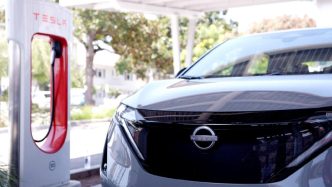Nissan announced plans to cut 9,000 jobs and reduce its global manufacturing capacity by 20% as part of a cost-cutting strategy to save 400 billion yen ($2.6 billion) this fiscal year. The decision comes as Japan’s third-largest automaker faces a sharp decline in sales in major markets, particularly in China and the United States.
The automaker revised its annual profit outlook down 70% to 150 billion yen ($975 million) on Thursday, marking its second adjustment this year. Nissan’s CEO Makoto Uchida explained that the company underestimated the rapid rise in demand for hybrid electric vehicles (HEVs) in the U.S. market, saying, “We didn’t foresee HEVs ramping up this rapidly.” Uchida added that changes to core models had encountered challenges. The U.S. market, where Nissan’s hybrid lineup lags behind that of competitor Toyota (7203.T), poses a particularly pressing concern, with hybrid demand surging.
Nissan’s restructuring, which includes reducing production capacity and employee headcount, is part of a broader attempt to regain stability following the 2018 exit of former chairman Carlos Ghosn. In addition to cutting jobs, the company will downsize its 25 global production lines by adjusting line speeds and shift patterns, according to Chief Monozukuri Officer Hideyuki Sakamoto.
Uchida and the executive team will also take voluntary pay cuts, with the CEO forfeiting 50% of his monthly compensation. Nissan is selling up to 10% of its stake in Mitsubishi Motors to raise 68.6 billion yen ($445.45 million).
Nissan reported an 85% drop in second-quarter operating profit to 31.9 billion yen, significantly missing an LSEG consensus forecast of 66.8 billion yen. Global sales for the first half of the fiscal year fell 3.8%, driven by a 14.3% drop in China, while U.S. sales declined nearly 3%, underscoring the automaker’s challenges in these key markets.











